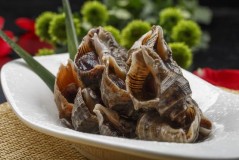
一、一般在词尾加上后辍-s。
读音变化:结尾是清辅音读[s];结尾是浊辅音或元音读[z]。
例:friend → friends; cat → cats
二、以s、x、ch、sh结尾的词,在词尾加上后辍-es。
读音变化:加读[iz]。
例:bus → buses; fox → foxes; match → matches; flash → flashes
三、以辅音字母+y结尾的名词,将y改变为i,再加-es。
读音变化:加读[z]。
例: lady → ladies; story → stories
四、以-o结尾的名词,如果不是外来词或缩写,就加-es,否则加-s构成复数。
读音变化:加读[z]。
例:tomato → tomatoes; potato → potatoes;
反例: piano → pianos(外来词); photo → photos;
五、以-f或-fe结尾的名词,多为将-f或-fe改变为-ves,但有例外。
读音变化:尾音[f]改读[vz]。
例:knife → knives; life → lives; leaf → leaves; staff(员工)→ staves; scarf(围巾)→ scarves
目前搜集的直接加s:roof - roofs, belief - beliefs, gulf(海湾)-gulfs, serf(农奴)-serfs,safe - safes, chief(负责人)- chiefs
六、部分单词的单复数形式不变。
读音变化:保持原音。
例:fish → fish; sheep → sheep; deer → deer
七、极少数单词,其复数形式没有任何规律。(经常出现在考题中)
例:man → men; woman → women; child → children; person → people; ox → oxen; foot → feet; goose → geese; mouse → mice; tooth → teeth;
八、有些名词则以复数词出现的机会较多。
例: clothes; shorts短裤; scissors剪刀; glasses眼镜; trousers长裤;
九、合成词单复数变化规则。
1)以man或woman为前缀的名词变复数时,前后两个名词都变成复数。
例如:woman doctor → women doctors, man waiter → men waiters.
2)以“可数名词+介词(短语)”构成的复合名词变复数时,把名词变复数。
例如:father-in-law → fathers-in-law等













